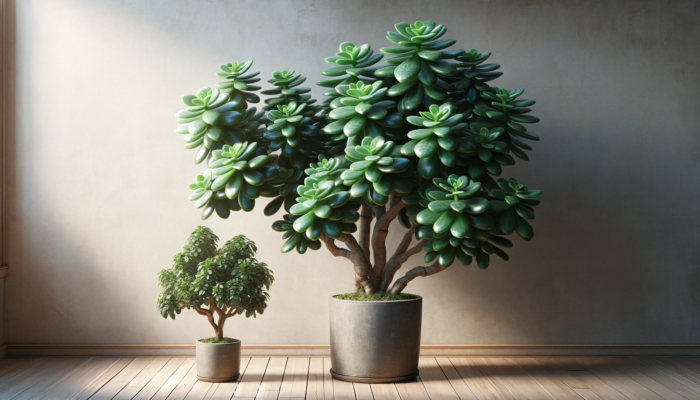Jade Plant Leaves Crystallizing: Causes and Solutions
Jade plants are succulent plants that are easy to care for. They have beautiful green foliage and often produce pink or white flowers. One of the interesting features of jade plants is that the leaves often crystallize on the surface. Crystallization can be caused by a variety of factors, including changes in temperature, humidity, and light levels.
While it may be unsightly, crystallization is not harmful to the plant and does not require any special care. In terms of solutions, make sure to water your jade plant sparingly and allow it to dry out between waterings. Reduce the humidity in your home and improve the drainage of your potting soil.
How To Care For Your Jade Plant
Temperature
Temperature requirements for Jade plants are 65-75 degrees Fahrenheit during the day and 50-55 degrees at night. They can tolerate lower temperatures, but will not flower or grow as well. Higher temperatures can cause the leaves to droop or turn brown.
Watering Your Jade Plant
If you’re like me, then you probably have a jade plant or two around the house. They’re easy to care for and add a pop of green to any room. But one question I often get asked is how often do I water my jade plant? The answer: it depends.
If your plant is in a pot, then you can water it once every week or two. If it’s in the ground then you should check on it every few days and make sure that the soil doesn’t dry out. After all, you don’t want to see your jade plant dying.
Lighting Requirements
Some plants, like jade plants, have specific lighting needs in order to thrive. Jade plants need high levels of light to grow and remain healthy. Without enough light, the leaves will start to turn yellow and the plant will become leggy.
Make sure you place a jade plant in a spot where it receives plenty of natural sunlight if you intend to keep it as a houseplant. If you don’t have a spot that gets direct sunlight, you can supplement it with artificial light. LED or fluorescent light bulbs can be used to provide the jade plant with the light it needs.
Humidity Requirements
Jade plants thrive in humid environments, but too much humidity can be just as bad as too little. The best humidity range for jade plants is between 40 and 50%. If the humidity is too high, the leaves will start to turn brown and the plant will stop growing. The leaves will curl if the humidity is too low, and the plant will not thrive.
Soil Conditions
South Africa has a wide variety of succulents, including jade plants. It is drought tolerant and can be grown indoors or outdoors. Jade plants need well-drained soil to thrive. They do not like wet feet, so make sure the soil is well-drained. A good potting mix for a jade plant contains 50% potting soil and 50% sand.
Fertilizing Your Jade Plant
Maintaining your jade plant’s health requires regular fertilization. The best time to fertilize a jade plant is in the spring when new growth begins. Follow the instructions carefully when using any fertilizer. Jade plants respond well to high levels of nitrogen, so choose a fertilizer that is high in nitrogen content.
Jade Plant Propagation
Here are some steps for propagating a Jade Plant:
1. Choose a healthy branch from your Jade Plant that has at least two leaves.
2. Cut the branch just below the leaves with sharp scissors.
3. Remove the bottom leaves from the cut end of the branch.
4. Dip the cut end of the branch in rooting hormone (available at most garden stores).
5. Stick the branch in moist soil and keep it watered until new roots form (should take about two weeks).
Learn More About Caring For Jade Plants
Frequently Asked Questions About Jade Plants
How long does a jade plant live?
A jade plant can live for up to 50 years if cared for properly.
What are the benefits of jade plants?
Jade plants have a variety of benefits, including improving air quality, reducing stress, and increasing productivity. Jade plants also improve your mood and can be used as a natural deterrent against pests.
Where To Place Your Jade Plant In Your Home?
Small jade plants can be placed on windowsills or bookshelves. If you have a larger jade plant, you can place it in a corner of the room or in an open space near a window. Make sure to water your jade plant regularly and give it plenty of sunlight.
How To Get My Jade Plant To Flower?
If you want to get your jade plant to flower, you need to do a little bit of work. In general, jade plants like lots of sunlight and need to be watered often. To help induce blooming, you can move your plant outdoors in the summertime or place it in a sunny location in your home. You can also water it more frequently when you’re trying to get it to flower.
Do jade plants clean the air?
By absorbing certain airborne chemical components, jade plants clean the air in your house. The most beneficial indoor-air quality-enhancement plants are jade plants, as compared to Dracaena and Pothos.




